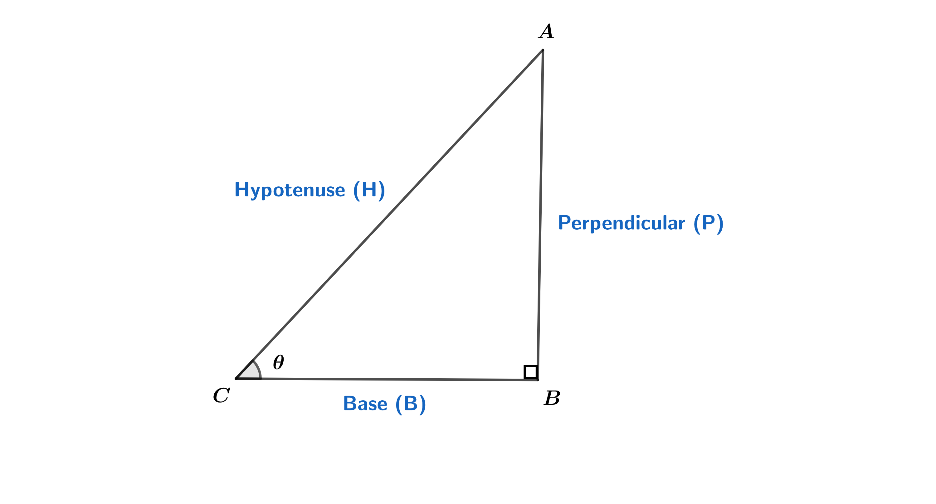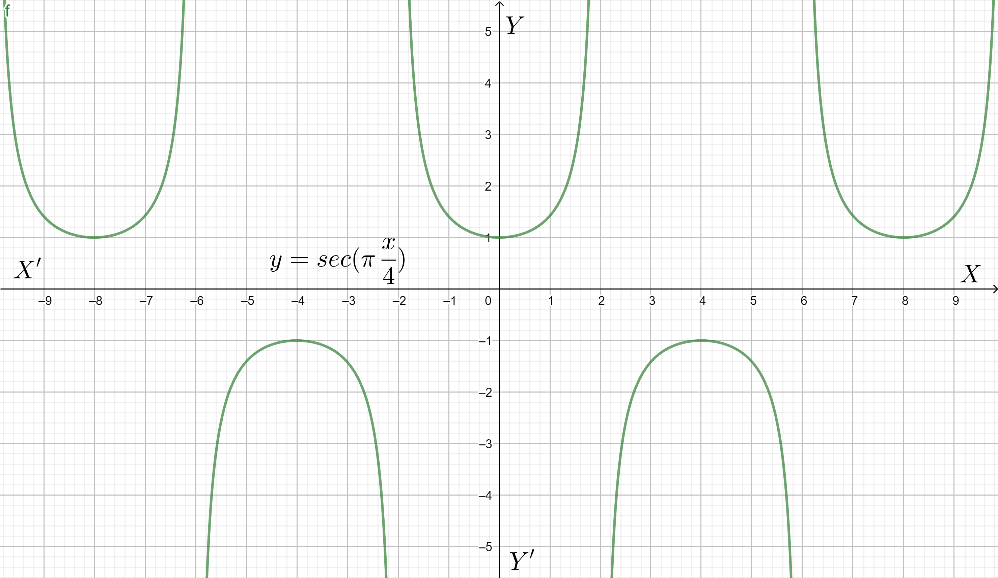Question
Question: How do you graph y = \(\sec \left( \pi \dfrac{x}{4} \right)\) ?...
How do you graph y = sec(π4x) ?
Solution
In the given question, we need to graph the function y = sec(π4x). Secant is the inverse function of cosine, and also helps in finding the values of derived functions. Secant function can be represented as:
⇒secx=cosx1 or cosx=secx1
Complete step by step solution:
Let’s discuss the question now.
As we are all aware that cosine is the basic function of trigonometry. Apart from basic functions there are some derived functions too. Secant is also one of the derived functions which is derived from cosine and contributes in deriving other functions. When we say sec θ, here θ represents angle in either degrees or in radians.

Now, let’s see how we can find the secant value of the angle θ.
In the above triangle, θ is the angle at C. So,
cosθ = hypotenuse(H)base(B)
Secθ is the inverse of cosθ. So we can write it as:
secθ = base(B)hypotenuse(H)
In this way, we can find the value of the angle given.
Now, next we will move on to some derived functions. They are also called reciprocal identities:
⇒cosecθ = sinθ1 or sinθ = cosecθ1
⇒secθ = cosθ1 or cosθ = secθ1
⇒tanθ = cosθsinθ = cotθ1
⇒cotθ = tanθ1 = sinθcosθ
Now, let’s make table of trigonometric ratios for all the trigonometric functions i.e. sin, cos, tan, cot, sec and cosec.
| Trigonometric ratios(angle θ in degrees) | 0∘ | 30∘ | 45∘ | 60∘ | 90∘ |
|---|---|---|---|---|---|
| sinθ | 0 | 21 | 21 | 23 | 1 |
| cosθ | 1 | 23 | 21 | 21 | 0 |
| tanθ | 0 | 31 | 1 | 3 | ∞ |
| cosecθ | ∞ | 2 | 2 | 32 | 1 |
| secθ | 1 | 32 | 2 | 2 | ∞ |
| cotθ | ∞ | 3 | 1 | 31 | 0 |
Finally we just need to plot the graph of y = sec(π4x).

Note: Not only this graph, we can plot any graph of trigonometric function if the angle is given. Trigonometric ratio table is given where different values are given for different angles using six different functions. Those are some common angles that are used everywhere in mathematics that’s why that table is important.
